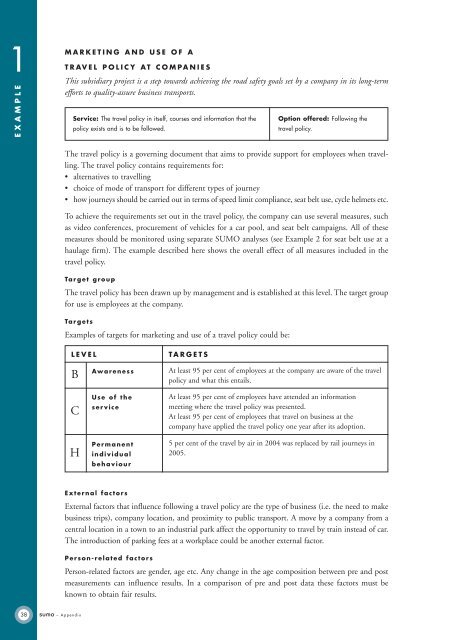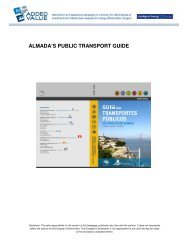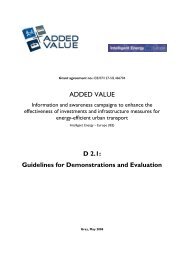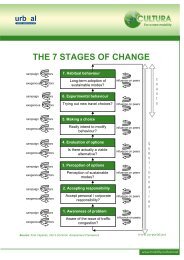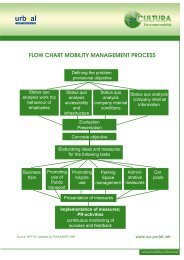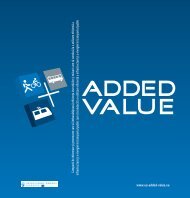SUMO - Eltis
SUMO - Eltis
SUMO - Eltis
You also want an ePaper? Increase the reach of your titles
YUMPU automatically turns print PDFs into web optimized ePapers that Google loves.
1<br />
EXEMPEL<br />
EXAMPLE<br />
Exempel på hur <strong>SUMO</strong> kan användas i planeringen av ett projekt<br />
38<br />
sumo – Appendix<br />
MARKETING AND USE OF A<br />
TRAVEL POLICY AT COMPANIES<br />
This subsidiary project is a step towards achieving the road safety goals set by a company in its long-term<br />
efforts to quality-assure business transports.<br />
Service: The travel policy in itself, courses and information that the<br />
policy exists and is to be followed.<br />
The travel policy is a governing document that aims to provide support for employees when travelling.<br />
The travel policy contains requirements for:<br />
• alternatives to travelling<br />
• choice of mode of transport for different types of journey<br />
• how journeys should be carried out in terms of speed limit compliance, seat belt use, cycle helmets etc.<br />
To achieve the requirements set out in the travel policy, the company can use several measures, such<br />
as video conferences, procurement of vehicles for a car pool, and seat belt campaigns. All of these<br />
measures should be monitored using separate <strong>SUMO</strong> analyses (see Example 2 for seat belt use at a<br />
haulage firm). The example described here shows the overall effect of all measures included in the<br />
travel policy.<br />
Target group<br />
The travel policy has been drawn up by management and is established at this level. The target group<br />
for use is employees at the company.<br />
Targets<br />
Examples of targets for marketing and use of a travel policy could be:<br />
LEVEL TARGETS<br />
B<br />
C<br />
H<br />
Awareness<br />
Use of the<br />
service<br />
Permanent<br />
individual<br />
behaviour<br />
External factors<br />
External factors that influence following a travel policy are the type of business (i.e. the need to make<br />
business trips), company location, and proximity to public transport. A move by a company from a<br />
central location in a town to an industrial park affect the opportunity to travel by train instead of car.<br />
The introduction of parking fees at a workplace could be another external factor.<br />
Person-related factors<br />
Option offered: Following the<br />
travel policy.<br />
At least 95 per cent of employees at the company are aware of the travel<br />
policy and what this entails.<br />
At least 95 per cent of employees have attended an information<br />
meeting where the travel policy was presented.<br />
At least 95 per cent of employees that travel on business at the<br />
company have applied the travel policy one year after its adoption.<br />
5 per cent of the travel by air in 2004 was replaced by rail journeys in<br />
2005.<br />
Person-related factors are gender, age etc. Any change in the age composition between pre and post<br />
measurements can influence results. In a comparison of pre and post data these factors must be<br />
known to obtain fair results.


